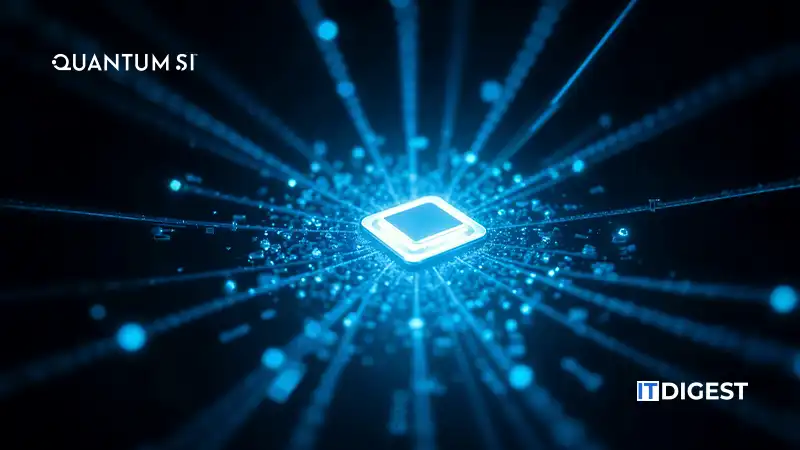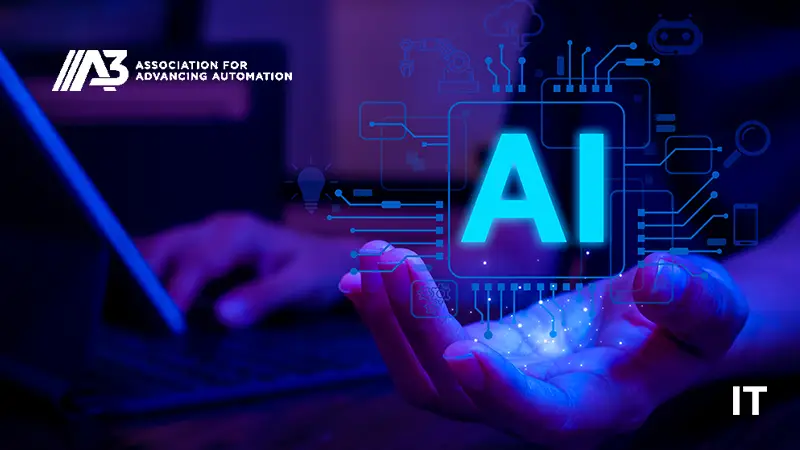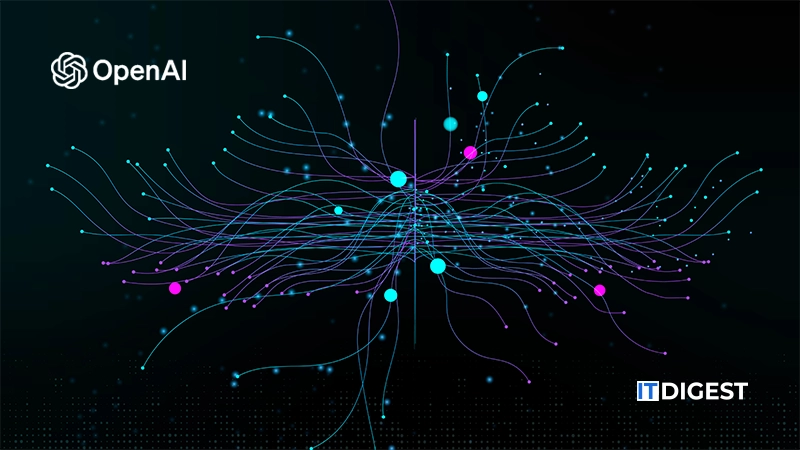OpenAI published a research paper titled “Understanding neural networks through sparse circuits””. The core of the work: rather than training large language models (LLMs) and other neural nets as dense webs of connections (where each neuron may connect to many thousands of others), the team explores sparsifying the connections so that each neuron has only a few dozen connections. They show that models trained under this constraint (i) can still achieve capability; (ii) tend to reveal simpler, more “disentangled” circuits (i.e., identifiable computational pathways) that allow mechanistic interpretability in other words, being able to trace why the model made a decision.
Key takeaways from the release:
- Interpretability (“why the model did that”) is increasingly critical as AI systems are deployed in high-stakes domains like science, education and healthcare.
- Their experiment: train a transformer‐style language model (architecture similar to GPT-2), but force most weights to zero, thereby making the network sparse.
- They find that in many simple tasks (for example, distinguishing whether a string in Python ends with a single quote or a double quote) the sparse model uses only a very small “circuit” of neurons and attention heads to perform the task.
- They also note limitations: the sparse models in this work are smaller than state‐of‐the‐art frontier models, and much remains “uninterpreted”. The authors caution that this is an early step.
What this means for the networks industry
By “networks industry” here I mean companies and technologies operating in network infrastructure, network services (telecom, data centres, cloud interconnects), networking platforms and network‐oriented applications (SD-WAN, network security, network monitoring & automation). Here’s how this advance will ripple through that space.
- Better visibility into network-AI behaviours
Many network services today include AI or ML components for example, predictive routing, anomaly detection, intrusion detection, traffic forecasting, dynamic configuration of network elements. Typically these models are “black boxes”: they ingest network telemetry, traffic flows, configuration logs, and output actions or alerts, but with limited interpretability. The OpenAI work suggests a path toward models which are more interpretable meaning network operators could trace why a decision was made (e.g., “why did the system choose route X” or “why did it raise alert Y”). That can lead to greater trust in automated network operations, and faster troubleshooting when issues arise.
- Efficiency, sparsity & deployability in network devices
Network‐device vendors (routers, switches, edge devices) increasingly embed AI/ML for functions like predictive maintenance, adaptive routing, analytics. Sparsity, as shown in the research, suggests that effective models can be built with many fewer active connections/weights. For networking hardware (where compute, memory, power budgets matter) this is promising: smaller, sparser models might run more efficiently on device (edge or embedded) rather than in central cloud only. That could bring more intelligence directly into network elements, enabling lower‐latency, on-device decision making.
- Enhanced security & auditability
In the networking field, security is paramount. AI/ML models used for intrusion detection, zero-trust decisioning, anomaly monitoring must be auditable and explainable for compliance, governance and trust. A shift toward sparse, interpretable models means network security platforms may be able to provide stronger explanations of their decision logic, supporting audits, regulatory compliance (e.g., in telecoms, critical infrastructure) and helping reduce risk from adversarial manipulation.
- Impact on network automation & orchestration
Network orchestration platforms are moving toward autonomous networks: self-healing, self-optimising systems that reconfigure routing, bandwidth, topology automatically. These autonomous capabilities rely on ML models. If those models become more transparent and tractable (as the research suggests they might), then you gain a double benefit: the automation becomes more reliable and understandable, which increases enterprise confidence in handing over more network control to AI. That means accelerated adoption of intelligent network orchestration across service providers and enterprises.
Also Read: HPE & Ericsson Partner to Validate Dual-Mode 5G Core Solution
Business implications for firms operating in the networks industry
- Competitive differentiation: Vendors who adopt these more interpretable ML approaches may differentiate themselves in the market by offering “explainable network AI” a selling point when targeting regulated industries, enterprise customers, or telecoms with high compliance burdens.
- Cost and operational efficiency: If network intelligence moves to sparser, more efficient models that can run on edge or embedded hardware, firms may lower their compute and power costs, reduce latency, and improve scalability. This can translate into lower TCO (total cost of ownership) for network services and higher margins.
- Risk mitigation & compliance advantage: Enterprises increasingly demand auditability and transparency in AI-driven systems. Network providers who offer visibility into the “why” behind decisions (routing choices, threat detections) can reduce liability and win contracts in sectors like finance, healthcare, critical infrastructure which demand explainable AI.
- Faster innovation cycles: If models become easier to interpret and debug (via smaller circuits), network firms can iterate faster on AI features, more quickly identify failure modes, and build more robust network intelligence features. That could accelerate product roadmaps and time-to-market.
- Edge & IoT expansion: The move toward sparse models aligns well with edge networking and IoT deployments (where compute/energy budgets are constrained). Network firms serving edge/IoT use cases (smart cities, manufacturing, remote sites) may be able to deploy intelligence more widely, unlocking new services (predictive maintenance of network elements, local traffic optimisation, autonomous remote network functions).
- Strategic partnerships and research alignment: This research signals a broader industry push toward interpretability and efficient ML. Firms in the networks space may choose to align with partners (AI vendors, chip makers, networking hardware vendors) who invest in sparse/interpretable models so as not to fall behind in the innovation curve.
Challenges & things to watch
- The research is currently at an early stage: OpenAI itself notes that the sparse models they trained are smaller and less capable than frontier dense models. So while the technique is promising, it is not yet proven at scale. Network firms will need to evaluate when (and if) sparse interpretable models become viable for large‐scale production systems.
- Transitioning existing network intelligence platforms (which may rely on dense deep models) to a sparse interpretability paradigm may require investment, redesign of models, changes in tooling and monitoring.
- There may be trade-offs: the research shows that for a fixed size of sparse model, increasing sparsity can reduce capability (accuracy/performance) though might increase interpretability. Network firms must manage the balance between explainability and performance.
- Edge deployments and embedded hardware will need to support efficient sparse model execution hardware and software tooling must evolve for optimum benefit.
- As more network decisions are driven by AI, regulatory scrutiny around transparency, fairness, bias, and auditability will increase. Firms should proactively plan for governance frameworks around AI in networks.
Conclusion
The OpenAI research into “sparse circuits” for neural networks marks an important milestone for the broader AI ecosystem and the networks industry stands to benefit substantially. For network infrastructure, services and operations, the promise of intelligible, efficient, lightweight models that deliver actionable insights with traceability is compelling. Businesses operating in this sector should take notice: the competitive edge may well shift toward those who can offer not just intelligent networks, but explainably intelligent networks. As this technology matures, network providers, vendors and enterprises alike will need to assess how interpretability and sparsity can be incorporated into their AI strategies not just for performance, but for trust, auditability and new edge‐enabled services.
For your readers at aitech365, this development underscores how AI research is no longer just about “bigger models” but about smarter, more transparent models and the implications extend well into the physical and virtual networks that power our connected world.
































